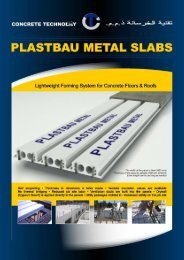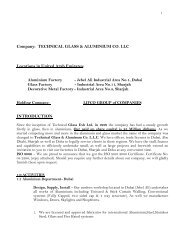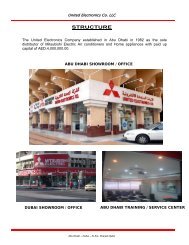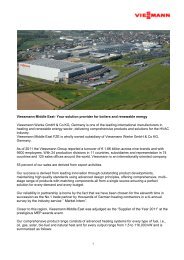Pearl Building Rating System - Estidama
Pearl Building Rating System - Estidama
Pearl Building Rating System - Estidama
Create successful ePaper yourself
Turn your PDF publications into a flip-book with our unique Google optimized e-Paper software.
components, as a minimum:<br />
� Topography;<br />
� Geology/ geomorphology;<br />
� Soils and geotechnical attributes;<br />
� Hydrology and groundwater;<br />
� Waste and contamination;<br />
� Coastal conditions;<br />
� Microclimate (such as prevailing winds, solar orientation and solar shading;<br />
� Priority species, habitats and ecosystems (both onsite and those influenced by the<br />
site);<br />
� Flora and fauna (including wildlife corridors, seasonal uses); and<br />
� Archaeological features.<br />
The Natural <strong>System</strong>s Assessment must be undertaken in combination with LBo-R2 Urban<br />
<strong>System</strong>s Assessment.<br />
The assessment must be based on a field survey and a desk top study using historical<br />
and/or other data. As a minimum, a field survey must be carried out on the project site<br />
and include a Phase I Habitat Survey, or similar. A desk top study is sufficient for the<br />
area of probable impact, sub-regional and regional analysis.<br />
The Natural <strong>System</strong>s assessment must illustrate the inter-relationship between<br />
environmental components and identify the carrying capacity of the site based on the<br />
following:<br />
� Significant Assets - Assets which are of significant importance (internationally,<br />
nationally, regionally and/or locally), including:<br />
o Priority Habitats - Habitats identified in Abu Dhabi Emirate which are of<br />
exceptional value and are highly threatened, including Intertidal Mudflats,<br />
Mangrove, Vegetated Sandy Beaches, Marine (seagrass, coral), Wadis, Sand<br />
Sheets and Low Dunes, Interdunal Plains and High Dunes, Alluvial Plains<br />
and Jebels (Reference is to be made to Brown and Boer, 2004 for detailed<br />
habitat types);<br />
o Any other habitat identified as significant through the Development Review<br />
Process, the Coastal Development Guidelines, an Environmental Impact<br />
Assessment, a Preliminary Environmental Review or a Strategic<br />
Environmental Assessment; and<br />
o Priority Species – A protected species (flora or fauna) or species<br />
determined to be critically endangered, vulnerable, threatened, near<br />
threatened or sensitive (as defined by the Union for Conservation of<br />
Nature, IUCN, UAE Red Data List and / or EHSMS.)<br />
� Valuable Assets - Any valuable assets, such as features of ecological value,<br />
including healthy native trees or shrubs.<br />
The assessment must identify and map areas to be:<br />
� protected;<br />
� used as mitigation areas;<br />
� enhanced;<br />
� remediated; and/or<br />
� allocated for habitat creation or restoration beyond mitigation; and / or<br />
compensation requirements.<br />
The assessment must then clearly identify and justify the following, as applicable, in<br />
addition to the above:<br />
� developable land;<br />
� buffer areas;<br />
� reclaimed land;<br />
<strong>Pearl</strong> <strong>Building</strong> <strong>Rating</strong> <strong>System</strong>: Design & Construction, Version 1.0, April 2010 33 of 223







